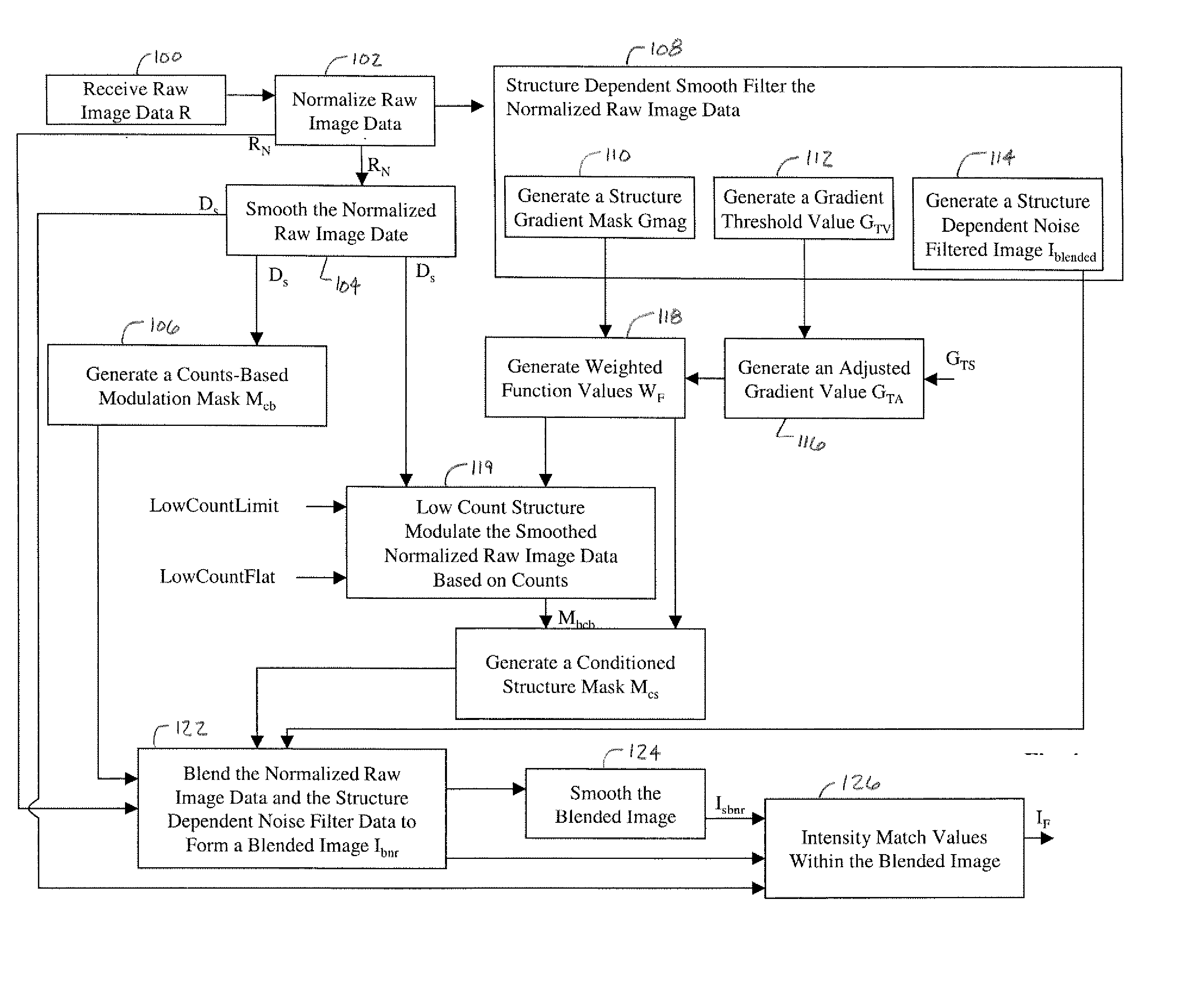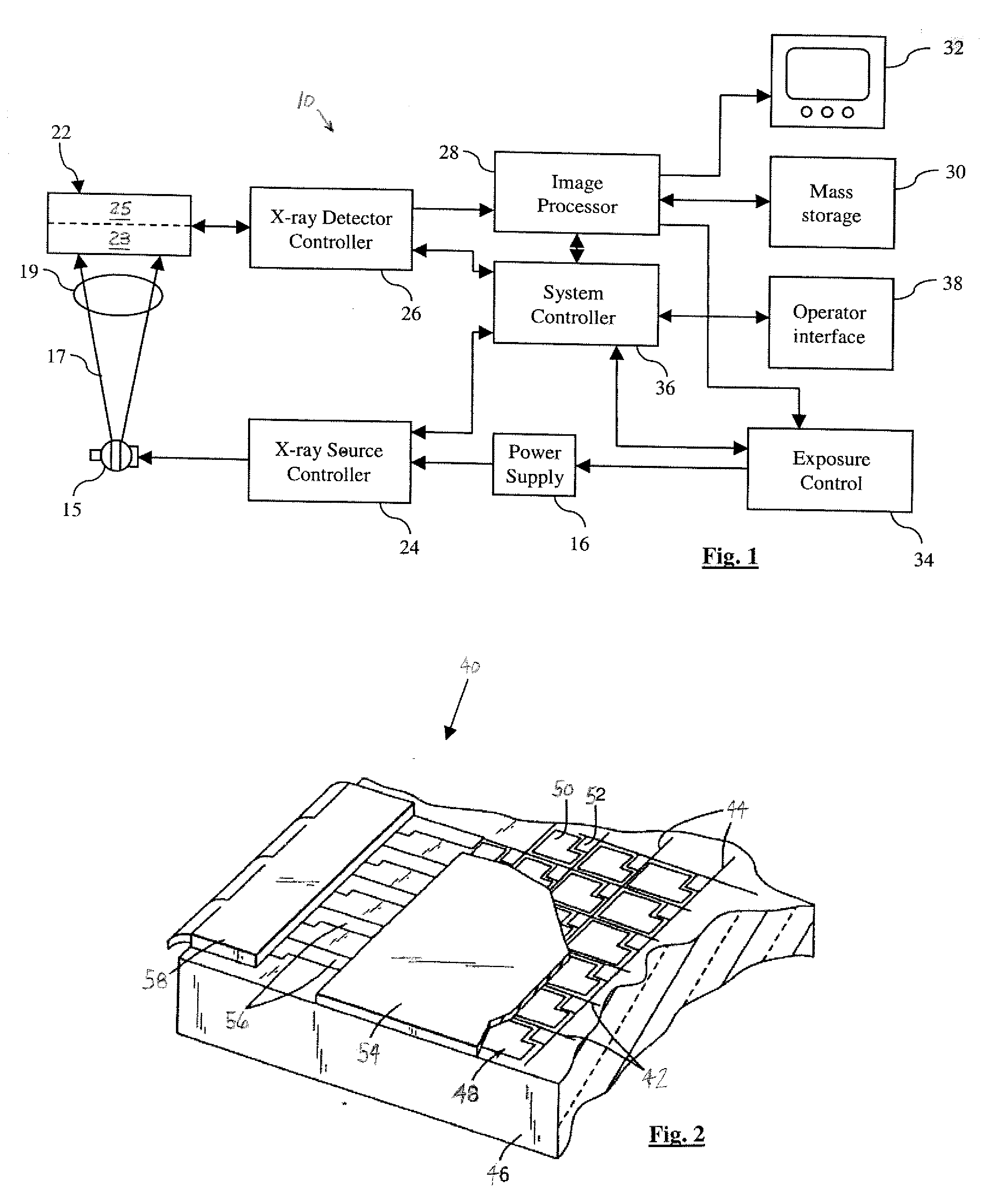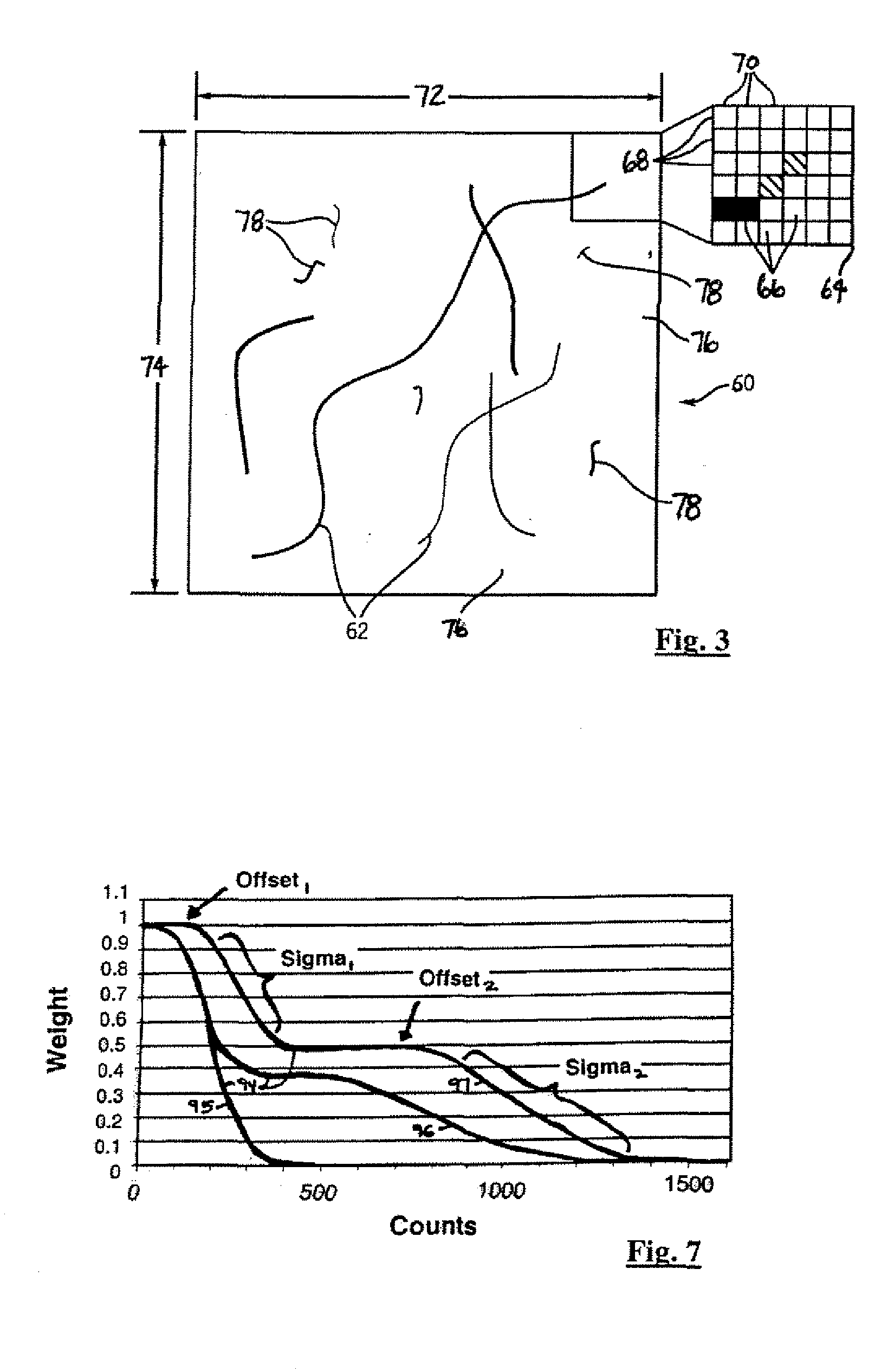Count adaptive noise reduction method of x-ray images
a noise reduction and x-ray imaging technology, applied in image enhancement, image analysis, instruments, etc., can solve the problems of reducing the contrast of useful information, reducing the accuracy of x-ray image processing, and exhibiting such noise in a readily visible manner, so as to reduce noise, reduce noise, and smooth high attenuated x-ray image regions
- Summary
- Abstract
- Description
- Claims
- Application Information
AI Technical Summary
Benefits of technology
Problems solved by technology
Method used
Image
Examples
Embodiment Construction
[0029] In the following figures, the same reference numerals will be used to refer to the same components. While the present invention is described with respect to the reduction of noise within x-ray images of an x-ray system, the present invention is capable of being adapted for various purposes and is not limited to the following applications: computed tomography systems, radiotherapy or radiographic systems, x-ray imaging systems, ultrasound imaging systems, magnetic resonance imaging systems, positron emission tomography systems, electron beam imaging systems, tomosynthesis systems, and other applications known in the art.
[0030] In the following description, various operating parameters and components are described for one constructed embodiment. These specific parameters and components are included as examples and are not meant to be limiting.
[0031] Also, in the following description the term “mask” may refer to a “look-up” table, a conversion scale, a function, or the like. ...
PUM
 Login to View More
Login to View More Abstract
Description
Claims
Application Information
 Login to View More
Login to View More - R&D
- Intellectual Property
- Life Sciences
- Materials
- Tech Scout
- Unparalleled Data Quality
- Higher Quality Content
- 60% Fewer Hallucinations
Browse by: Latest US Patents, China's latest patents, Technical Efficacy Thesaurus, Application Domain, Technology Topic, Popular Technical Reports.
© 2025 PatSnap. All rights reserved.Legal|Privacy policy|Modern Slavery Act Transparency Statement|Sitemap|About US| Contact US: help@patsnap.com



